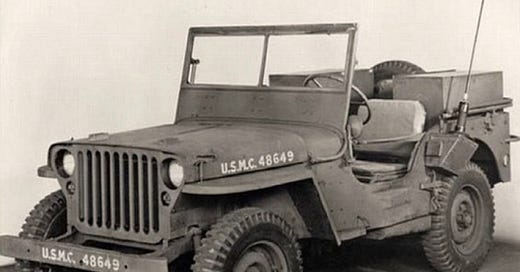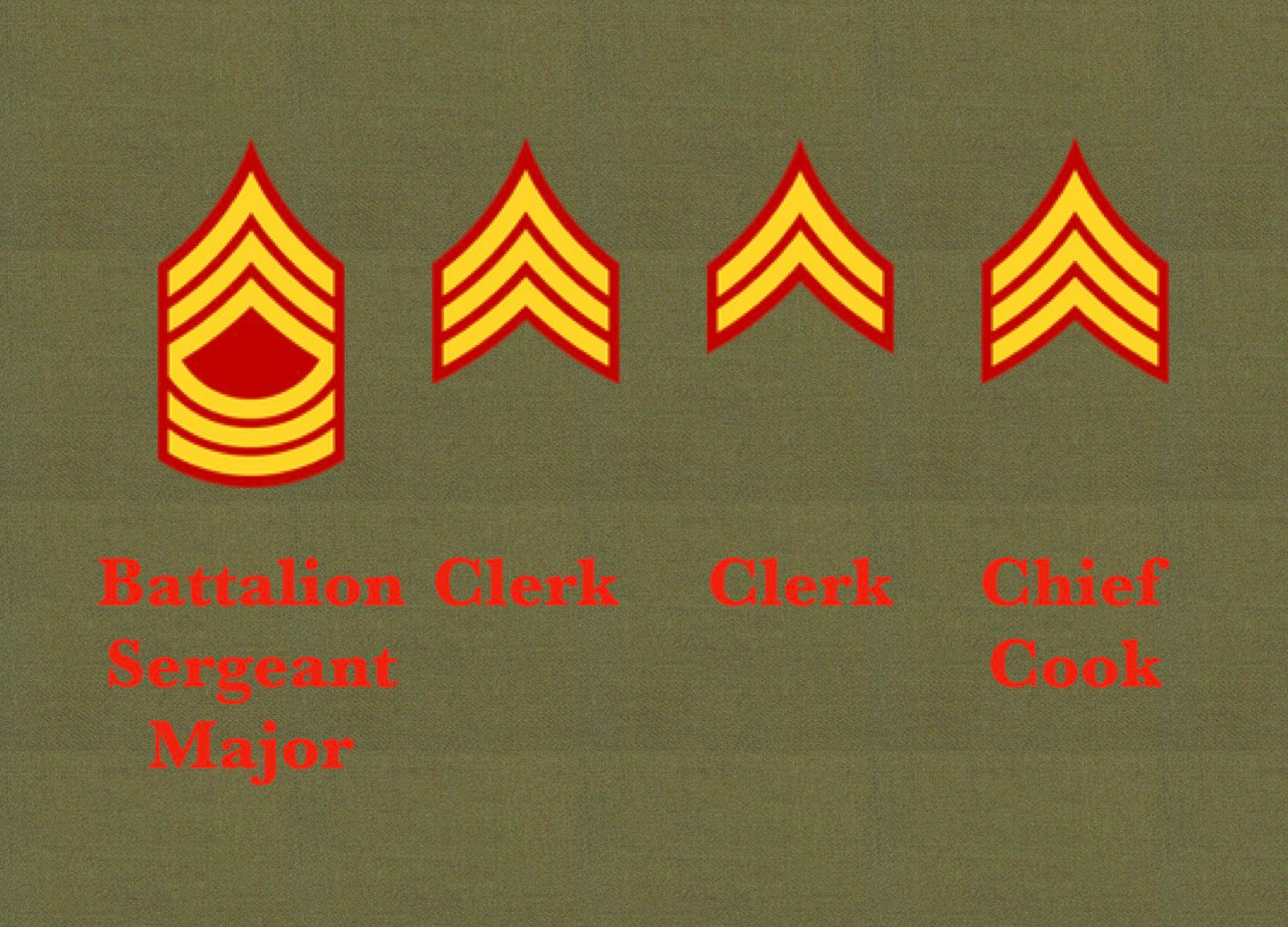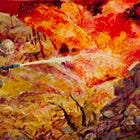When I first began the serialization of John Sayen’s Battalion, I made few changes to the portions of that work that I posted. Recently, however, I came to the conclusion that the document that my old (and very dear) friend left to me had more in common with a preliminary study than a mature manuscript. With this in mind, I have decided to supplement (and, in some cases, replace) the text of An Organizational Study of United States Infantry with short pieces that present the research carried out by Lieutenant Colonel Sayen in a way that bears a closer resemblance to the two books about the organization of American military units that he wrote.
The tables of organization adopted on 28 March of 1941, which governed the basic structure of the infantry regiments of the US Marine Corps two years, changed twice during this period. In addition to doing many other things, the first of these revisions, which became official on 10 January 1942, increased the number of jeeps rated by each Marine infantry regiment by a factor of three. The second edition of the D-Series tables of organization, signed on 1 July 1942, doubled the number of these soon-to-be iconic vehicles allowed to the ideal Marine infantry regiment.
None of the seven jeeps allowed to the Marine infantry regiment by the first version of the D-series tables (those of 28 March 1941) belonged to the component battalions of that organization. Rather, one was given to the regimental weapons company and six found a home in the regimental headquarters and service company. (The tactical symbol used to depict the regimental weapons company on the following infographic reflects the original conception of that outfit as a means of defending the regiment against both ground attack aircraft and armored vehicles.)
The authors of the tables of organization of 28 March 1941 may have imagined the six jeeps of the headquarters and service company as a kind of ‘regimental motor pool’. If, however, that was the case, I find it strange that they made no provision for either a motor sergeant or a mechanic.
The reforms approved on 10 January 1942 (and thus a little more than a month after the official entry of the United States into the Second World War) took all six jeeps out of the regimental headquarters and service company. At the same time, they provided seven jeeps to each of the three component battalions of the infantry regiment.
The authors of the reformed establishments assigned four jeeps to the battalion headquarters (and thus the headquarters company.) However, while they gave the battalion headquarters four non-rated Marines to serve as drivers, they made no provision for any of the specialists that would have turned a collection of vehicles into a proper motor pool. Thus, I find myself imagining situations in which the four jeep drivers of the battalion headquarters reported directly to the battalion sergeant major, one of the two clerks of the battalion staff, or (strange to say) the chief cook who ran the officers’ mess.
The remaining three jeeps allowed to each battalion by the reforms of 10 January 1942 were divided equally among its three rifle companies. As before, the authors of the establishments provided a private to drive each jeep, but no other motor transport Marines. However, as the headquarters of a rifle company rated two more non-commissioned officers than the headquarters of an infantry battalion, there were lots of leaders in a position to serve as the ‘additional duty’ supervisor of the one-vehicle motor pool. (My money is on the sergeant placed in charge of ‘supply and property’.)
The set of establishments signed on 1 July 1942 provided four additional jeeps to each infantry battalion, all of which ended up in the battalion weapons company. Like the jeeps of the battalion headquarters company, all of these were assigned to the company headquarters of the weapons company. (As the latter unit possessed ten non-commissioned officers, there was no shortage of non-commissioned officers able to take charge of the four-man flotilla of quarter-ton trucks.)
The reforms adopted on 1 July 1942 also provided jeeps to the two autonomous companies. In particular, they restored three of the six jeeps that the headquarters and service company had lost on 10 January 1942. (However, rather than returning to the battalion headquarters, these jeeps ended up in the wire section of the communications platoon.) At the same time, they gave the regimental weapons company eight additional jeeps.
The jeeps of the regimental weapons company served three different purposes. Two - one in the company headquarters and one in the anti-tank platoon - served as classic utility vehicles. Three - two in the company headquarters and one in the 75mm gun platoon - carried radio sets. Four replaced the one-ton trucks that had pulled the anti-tank guns of the anti-tank platoon.
For Further Reading:
To Subscribe, Support, or Share:













Marines on the beaches of Tarawa in Nov 1943 said that they knew they were going to win when they saw the first Jeep roll onto the beach.
Most British infantry battalions were scaled for carriers (tracked, light armour, open top, often called Bren carriers) but by 1945 were quietly swapping them for Jeeps. The protection of a carrier was more than off-set by the Jeeps' light weight, easier maintenance, better gas mileage and cool factor. Another win for US engineering. Thank you.